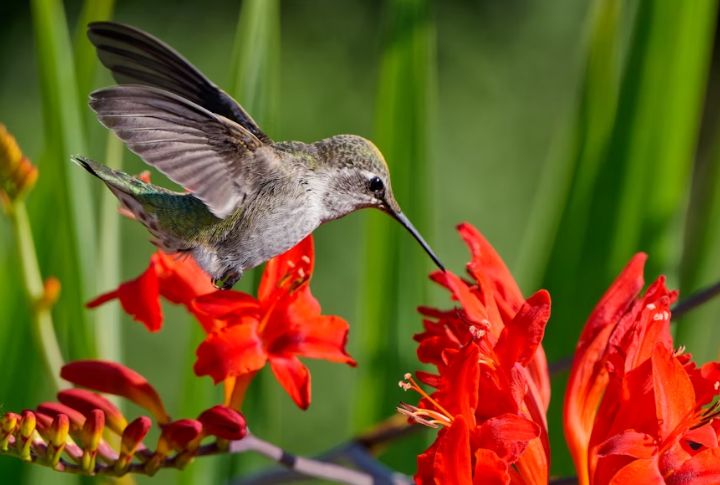
Hummingbirds have a certain charm they bring into your garden—zipping through the air like little sparks of joy. It’s easy to get hooked on watching them. If you’ve been wondering how to get more of those tiny visitors stopping by, you don’t need a full backyard overhaul.
Turns out, a little creativity with your container plants goes a long way. Just the right setup can make all the difference.
Use Splashes Of Color
Certain plant combinations in containers are irresistible to hummingbirds. So, aim for a mix of flowers that offer both visual appeal and nectar. The following meet that requirement:
- Fuchsia: deep pinks and purples.
- Salvia: fiery reds and electric blues.
- Petunias: bright purples, pinks, and red tones.
- Calibrachoa (Million Bells): vibrant orange, hot pink, and deep violet.
- Lantana: warm yellows, magentas, and coral.
- Zinnia: a punchy rainbow of reds, fuchsias, and oranges.
- Cuphea (Cigar Plant): tubular blooms in red-orange.
- Bee Balm (Monarda): wild tufts of crimson or raspberry pink.
- Coral Bells (Heuchera): soft coral spikes rising above colorful foliage.
Bright color contrasts in reds, purples, and pinks draw hummingbirds in like a flashing sign at a roadside diner. These tiny birds see colors more vividly than humans do, especially reds and purples. When those colors are grouped in one pot, it’s like putting up a neon “Open” sign for their next nectar stop.
Height Adds To The Attraction
Utilize height variations in your container arrangement by placing tall plants in the center and trailing ones around the edges. This layering technique gives hummingbirds easier access to flowers at multiple levels, and your patio or porch looks dynamic.
Vertical structure in a container garden also mimics natural plant groupings found in the wild, where hummingbirds dart between tall stalks and low-hanging blooms. The setup offers both perching and feeding opportunities.
Keep It Blooming All Season
Another trick is choosing long-blooming plants, which ensures a steady nectar supply for hummingbirds throughout the warmer months. Plants like calibrachoa and verbena keep flowering deep into the season.
Since hummingbirds rely on consistency, they’ll return to the same spot day after day if food is reliable. That’s why long-blooming plants are a win. Bonus: your containers will stay vibrant while other garden spots start winding down.
Use Portable Pots That Travel With The Sun
Portable pots make it easy to move sun-loving plants where they thrive best. When you can roll your blooms into brighter spots, you’re giving them a boost in health and flower power. More sun perks them up, and that means more colorful blooms catching the attention of nearby hummingbirds.
There’s also something nice about having that kind of flexibility. If one corner of your porch feels dull, just move the flowers over and instantly brighten the space. The hum of wings and a splash of color can really shift the mood. It’s like redecorating, but with nature’s help.
And here’s another win—those pots packed with nectar-rich blooms do the job of feeders, minus the sugar-water fuss. Without any mess or hassle, you get clean, natural feeding in a setup that looks as good as it works.
In the end, it just takes the right mix of plants and a bit of patience. Set it up once, and soon enough, hummingbirds will start making your containers part of their daily route

